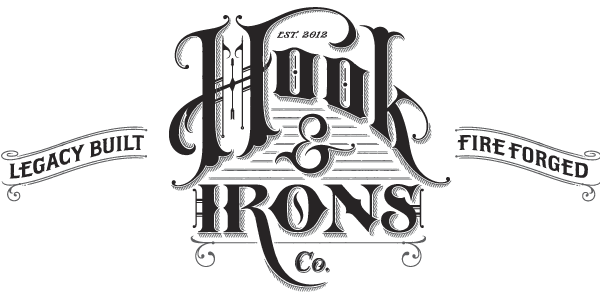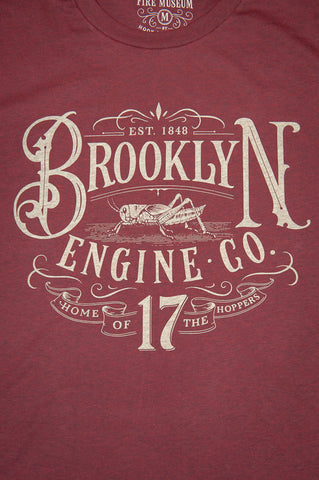Hook and Irons
Spotlight on FDTN - The Alamo Documentary January 01 2021, 0 Comments
One of the benefits of Hook & Irons has always been the ability to put a spotlight on parts of the fire service that reflect the best qualities of our profession. This year we decided to make a mini-documentary about The Fire Department Training Network. Located on a farm just outside of Indianapolis, Jim McCormack and his core of instructors have built the pre-eminent live fire training facility in the United States. In fact, it's really the only place you can go to train under live fire conditions in multiple building configurations. While current standards and regulations have scared most departments and certification based training programs from realistic live fire training, FDTN has pushed forward by building more props and sticking to their core philosophy, "Learn the job by doing the job." Taking a class at FDTN will not only make you a better firefighter, it will make you question whether the current training at your own department is actually preparing you for the firefights you know are coming.
As we move forward into 2021, it is my hope that the fire service will take a long, hard look at how we train firefighters in this country. We can start by listening to the men and women who are sounding the alarm.
It's with great pleasure and my sincere hope that you enjoy the video. I was honored to spend a few days with greatness.
-George
The Original New Yorker - The Birth Of The Modern Fire Helmet April 22 2019, 0 Comments
The modern fire helmet as we know it was invented by H.T. Gratacap, a luggage maker from New York City.Be Safe Out There January 30 2017, 5 Comments
One of the great benefits Hook & Irons has afforded me has been the chance to travel and meet firefighters from all over the country. I've enjoyed tremendous hospitality and unrivaled brotherhood. I've met firefighters that work on farms all day and volunteer on their days off to firefighters that work multiple fires a day. I've learned that one is not necessarily a better firefighter than the other. I've expanded my view and gained a new appreciation for my own department. I've discussed methods, problems and tactics with firefighters from all over the world. There are some differences, but largely we share more similarities than anything else.

What has been most striking though, is the universal parting phrase of firefighters everywhere I go.
"Be safe out there."
It doesn't matter where you go.
"Be safe out there."
The phrase accompanies the handshake, from California to New York and everywhere in between.
I've thought about the phrase for some time now and wondered why it's so pervasive. Shouldn't it go without saying, 'be safe.' Isn't it the most obvious thing? Hey Tom, "Eat some food today. And while you're at it, drink some water too." It seems so anyway.
But it's not.

We are reminded daily by LODD's, a barrage of youtube videos, and the actions of our own members that a lapse of vigilance, a pause in awareness, the temptation of short cuts and laziness can have dire consequences.
"Be safe out there," is a quiet, friendly reminder to stay vigilant--to keep your eyes open and not let your guard down.
"Be safe out there," is an acknowledgement of the unknowable danger that lies in wait--a danger that takes good men and women even when they have done everything to the best of their ability.
"Be safe out there," is the hope that your awareness will protect you.
"Be safe out there," is the only way we, who can not be with you in your time of trial, hope that the words resonate with you in your time of need.

Heroism and heroic acts subvert safety for the benefit of others particularly those who cannot help themselves. Can you be brave or act in a heroic way without some risk? The answer most certainly is, 'no.' Can you take a risk without setting aside your own safety, even in the most moderate degree? The answer again is, 'no.' Firefighters, police officers and members of the military understand and accept this fact. Ultimately we are guided by our training, our experience and our team when making a decision to act. Those decisions make heroes, cowards or fools out of us all.
I know that there is nothing I can do for you or you can do for me when we are called to act at that decisive moment--the moment where your training and your experience will guide your decisions. All we can say as your friend, your peer and your brother is, "Be safe out there."
Brooklyn Engine Co. 17 July 30 2016, 0 Comments
Last year, I had the honor of donating to the NYC Fire Museum in the name of Dennis Smith (author of 'Report From Engine Co. 82). At that time, after meeting with some of the staff, we decided to make a NYC Fire Museum tee based on their archives and designed by Hook & Irons. The result of our first effort is Brooklyn Engine Co. 17.
The design is based on a banner that is displayed in the museum. It shows the active roll of all the members of Engine 17. The banner is beautifully drawn. We wanted to take elements of the banner and use them to capture the spirt of the company and its story. Below is a picture of the main part of the banner.

After reading more about the history of the company, we decided to focus on the engine's logo--a grasshopper.

The grasshopper was unique and the story behind the 'hopper club' was very interesting to me.
In 1849, Engine Co. 17 purchased a Philadelphia patterned 'piano box' style engine which quickly earned the name 'haywagon' because of its long and flat appearance. The brake and the pump levers were located on top of the engine and the men who climbed up and down it so skillfully were said to look like grasshoppers. Even after they purchased a newer engine the name stuck. 'The Hoppers' kept their name for the rest of the company's existence. At its high point, Engine Co. 17 boasted 75 members and their firehouse was regarded as one of the most beautiful in the country.

The resulting design is our best effort to create a station logo and design as if the company were still operating today. We wanted everything to be hand-drawn and we wanted to bring the story of the 'hoppers' back to life.
It has been an amazing experience to be able to access the museum. If you're visiting the city, you should stop by and support them. You can even pick up a Hook and Irons shirt in their gift shop, our first retail location.
If you'd like to purchase Brooklyn Engine Co. 17, you can click here.
You can read more about the history of the Brooklyn Fire Department by following this link.
Tools Of The Trade - Birth of 'The Hook' November 25 2014, 2 Comments
Earlier this year while visiting a neighboring firehouse, I saw that they had displayed a very cool shadow box with all of the different knots used in our fire department. I really liked the idea and all of the other 'knot boards' I've seen. I thought that it would be nice to see a board with many of the different types of hooks used in the fire service around the country laid out in a 'knot board' style so the viewer would be able to see all the different variations next to each other. As far as I knew, I had never seen anything like this before.
The first problem was finding the right designer who would be willing to research and sketch the different hook variations and lay them out in an interesting manner. I chose Adam Weaver for this project because not only is he a very talented hand-letterer, he is also extremely talented at creating authentic and original illustrations. The only problem was that Adam is not a firefighter. He did not know how important this tool is to us or it's many uses. How could he feel as passionately as I do about our tools and our history?
Fortunately, I've learned that Adam is a life-long student of many subjects and after the Keys To The City project, I know that he relishes learning the finer details of a subject rather than the broad strokes.

First, we set out choosing which hooks to use. I tried to pick not only the most popular hooks, but ones that are unique to certain parts of the country. After we settled on the subjects, Adam got to sketching. We tried to never stray too far from the 'knot board' feel. I wanted the design to be educational as well as visually interesting.

In the end, I feel Adam created a design that is truly original and unique--a design that I hope most firefighters would be proud to own.
I want to thank Adam for being so patient and taking the time over these past months to learn so much about our world. We have become fast friends and I hope Hook and Irons can tempt him into creating more designs for us in the future.
As for me. . . Well I hope you guys dig all the care, dedication and time that went into this one. And, as I always say, 'Wear it with pride.' And this time, since we're offering a limited edition print, you can 'display it with pride' as well.
101 Rules For The New Fire Officer April 18 2014, 19 Comments
I've gotten such a great response for the 101 Rules for the New Firefighter, that I've written a list for the newly promoted officer. I've compiled the list from personal experience and through reading and conversations with respected peers. Feel free to add to the list in the comments section.
1. Be calm. You are now the person who is in charge of keeping your crew safe. Your nervousness and excitement will never cause a positive response in those that are following.
2. Never ask a firefighter to do something you are not willing to do yourself.
3. A promotion is not a reason to stop cooking. You have not attained royal status yet.
4. Have your driver slow the truck down 2-3 blocks before arriving at a fire. This allows you to look for hydrants, visualize the scene, and slow your mind down enough to process what you're about to see and do.
5. A leader is best when people barely know he exists, when his work is done, his aim fulfilled, they will say: we did it ourselves. —Lao Tzu
6. Arrive to work at least a half an hour early. If your firefighters arrive before you, then show up earlier.
7. Make your drills meaningful with achievable goals.
8. Participate in your drills. You are not a general. You are a fire officer.
9. Admit your mistakes to your crew. They know you're not perfect. Don't pretend to be.

10. Lead me, follow me, or get out of my way. — General George Patton
11. You will see evil. You will see senseless tragedy. It is your responsibility to help your crew cope and understand it. It will also be your responsibility to recognize when they are not coping well.
12. When mistakes are made, take the blame. You are, after all, their leader. Their shortcomings are yours.
13. When good things happen, give credit.
14. Always have money in your wallet. No one wants to wait for the guy making the most money to go to the ATM.
15. Only pick the fights you know you can win. Be decisive.
16. Don't be afraid to bend the rules to serve a greater good.
17. Outstanding leaders go out of their way to boost the self-esteem of their personnel. If people believe in themselves, it’s amazing what they can accomplish. —Sam Walton
18. Empower your driver. He is your strong arm, your life line, your enforcer, and your confidant.
19. It's easy to say yes. A good leader knows how and when to say no.

20. Don't take the tools from your guys. Give your firefighters the chance to be successful. Guide them and make sure they are acting safely. They will be insulted if you take the tool and their chance to complete the task away from them.
21. Leaders think and talk about the solutions. Followers think and talk about the problems. —Brian Tracy
22. You are going to be criticized. Do what you know in your heart is the right thing and you will be fine.
23. Always work for the better good of the whole, not what is best for you.
24. Great leaders are almost always great simplifiers. They are people who can cut through argument, debate, and doubt to offer a solution everybody can understand. —General Colin Powell
25. Don't take shortcuts.
26. Don't be offended if you are part of a practical joke. Be worried if the guys don't joke with you at all.
27. Be approachable.
28. Remember birthdays, the names of spouses and the children of your co-workers--take an interest in their personal lives.
29. When knocking on a door for routine calls (EMS or otherwise) step to the side of the door. Many firefighters have been shot through the door by startled or scared occupants.
30. Learn to gauge the emergency effectiveness of your crew. Not all crews can perform at the same level.
31. Don't be afraid to ask a firefighter what they are bringing to the table.
32. It is better to lead from behind and to put others in front, especially when you celebrate victory when nice things occur. You take the front line when there is danger. Then people will appreciate your leadership. —Nelson Mandela
33. Seek out the busiest trucks.

34. Leaders aren’t born; they are made. And they are made just like anything else, through hard work. And that’s the price we’ll have to pay to achieve that goal, or any goal. —Vince Lombardi
35. Empower your firefighters.
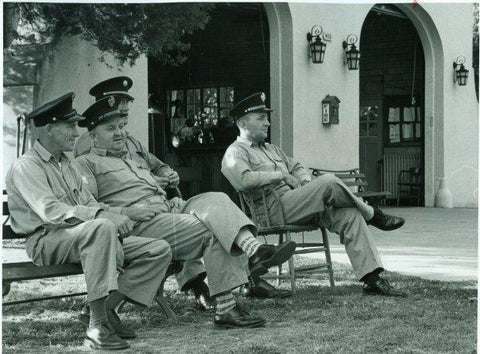
36. Observe your crew, their moods and their actions. It's not your job to make their bad day worse, but to show them a way out of it.
37. It's okay to joke and play jokes. It's not okay when those jokes are exclusionary or make the member feel like an outcast.
38. Have your own coffee mug, make it a big one and don't let anyone else touch it.
39. Don't get mad when they freeze that same coffee mug in a block of ice.
40. Just because you're behind the nozzle man on the fire, does not mean you are feeling what he's feeling. Trust his words and his actions. Sometimes he needs your confidence to make that final push and sometimes he needs you to recognize a change in tactics is needed.
41. Give your plan a chance to work.
42. Time becomes compressed on a fire scene. It's your job to mark time accurately.
43. The driver does not need you to hit the air horn and the Federal. He only needs you as a second set of eyes and as an occasional navigator.
44. Do not tell the driver how to get to an address. Do counsel your driver if he gets lost and does not ask for help prior.
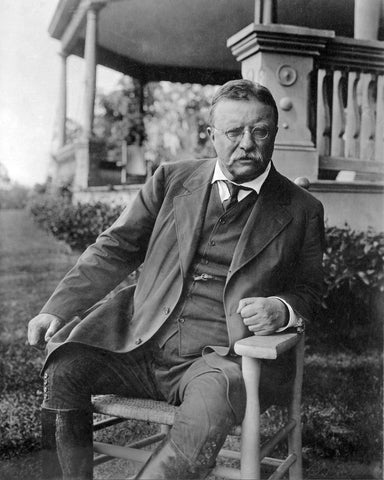
45. The best executive is the one who has sense enough to pick good men to do what he wants done, and self-restraint to keep from meddling with them while they do it. --Theodore Roosevelt
46. Never underestimate the power of common sense.
47. Sometimes the smartest thing to do is man up, and muscle through it.
48. We don't work with calipers, rulers and levels. We work with hooks, pry bars and axes. Fast, efficient and effective is more important than exact and perfect.
49. Stay hydrated.
50. One of the most important jobs you will do on scene is control the tempo of the work that is being done. No one mentions it, but everyone feels it.
51. Wear your seat belt and make sure the guys are wearing theirs.
52. If you have pride in your truck and your station, you will attract like-minded people.
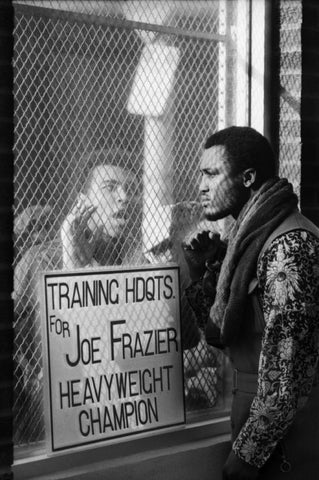
53. It's fine to talk smack as long as it's with your neighboring station. They need to know who the best crew in the battalion is.
54. Our chief want is someone who will inspire us to be what we know we could be. --Ralph Waldo Emerson
55. Take a structural collapse class and read Brannigan's Building Construction for the Fire Service.
56. In this order; you take care of your crew, your station, then your department.
57. Every EMS call is a chance to study building construction and layout. It is also a chance to recognize hazards from the inside out.
58. Your job is to remove doubt and build confidence.
59. Attend at least one fire conference a year. It will help you stay current on the latest tactics and techniques.
60. For as hard as it may be, you can not let the failures of management, union, or contract outwardly affect your demeanor. Firefighters take a cue from their officers. If you are negative. Your firefighters will be too.
61. If time permits, take a power nap. You'll be thankful you did at 3am when the crew is expecting your best.
62. If your budget permits, buy leather boots and a personal flashlight.
63. If you are on shift for the holidays, it is your job to make that day special for your second family. Coordinate the holiday meal, gift exchange, family time and/or whatever the station needs to make that day the best it can be.
64. You are not expected to know everything, you are expected to be able to find the answer or solution for almost everything.
65. Do not undermine the chief, even if you disagree with his decision or action. Tell the guys that you will talk to him and try to find out why he acted the way he did.
66. Small disagreements should be handled quickly and decisively even if it makes you the bad guy for the moment. Small unchecked problems become larger ones without intervention.

67. Before you commit your crew to a dangerous situation, be sure you've done your best to set yourself up for a successful conclusion.
68. Never write a correction, counsel, or shortcoming in an e-mail, particularly if you can deliver the message personally. The most misinterpreted communications are electronic in nature. Body language, tone of voice, and the necessity of looking the person in the eye are lost.
69. Don't be afraid to write an e-mail to your crew commending them on a job well done and cc'ing your supervisor with the message. This is an e-mail that is always well-received.
70. Do whatever you have to do to stay on the good side of the mechanic. Bring him water and coffee, offer him lunch or anything else that shows him that you appreciate the effort he's putting into your rig. They will work miracles for you if they think you're worth the effort.
71. You should not do personal business on truck time. If you do, don't say no when the firefighters ask you to take them somewhere for personal business.
72. Don't be afraid to give the fire a dash from the outside if there is something delaying your stretch into the interior. It may allow you the extra time you need to get the job done.
73. In a word, the best quality a leader can have is integrity.
74. A good plan executed in the moment of truth, is better than a perfect plan executed too late.
75. A good leader is a person who takes a little more than his share of the blame and a little less than his share of the credit. —John Maxwell

76. Always leave room for the aerial pieces.
77. Always talk to the police that spotted their vehicle in front of the fire scene. It's not their fault God didn't give them common sense.
78. Now you're in charge. The time for complaining is over. Fix the problem or do your best to explain why it's FUBAR.
79. Complaints go up, not down. Additionally, not every complaint from your firefighters is worth your time or effort. Sometimes they just want to vent or be heard. In those cases, just listen. Sometimes the complaints are personal in nature. Don't be afraid to tell them so. If you try to fix everything, you won't fix anything.
80. In the morning, look at the roster of the neighboring units, judge who is effective and who is not. Knowledge of that on a fire scene may help keep you safe or affect a decision you are trying to make.
81. Buy yourself a custom shield. You studied your ass off. You deserve it.
82. Sometimes great command is quiet command. There is no need to use precious air time on the radio just to hear yourself talk.
83. Make all radio communications clear and concise.
84. Watch fire videos. All kinds. There are lessons everywhere.
85. A new rookie in the station is a great excuse to go back to basics with everyone. Most firefighting skills are perishable and training the new guy or gal is a great chance for everyone to knock the rust off.
86. The rookie should never be drilling alone. You and the crew should be geared up doing whatever it is you are asking them to do.
87. The best leaders create a 'shared vision' that followers can rally around and share in the work to complete the goal.
88. It should be the officer's habit to place themselves at the most volatile point in whatever task they are undertaking; just behind the nozzle, on the roof next to the guy venting, or in the house doing the search.
89. If you are not automatically dispatched with the ambulance to shootings, stabbings, or gang fights, put yourself additional. They may need your help and by the time you get there it may be too late.
90. Strong book knowledge does not translate into strong leadership.

91. Read, Firefighting Operations in High-Rise and Standpipe Equipped Buildings by Dave McGrail. It is, in my opinion, one of the best textbooks for the fire service.
92. When developing your drill, never make more than one large thing that your firefighters have to imagine. For instance, if they have to imagine that the house is on fire and you are going to practice advancing hose, then you will lose them if you make them imagine a lost firefighter. You must actually have a lost firefighter in a structure to make the drill practical.
93. Repetition of one or two skills during a drill is much more effective than practicing multiple skills one time only.
94. Become proficient at communicating on your radio and with your crews while on air.
95. Make sure your firefighters know that on a fire scene you want to hear their observations. You also want those observations to be stated quickly and succinctly.
96. Whenever extending above grade or below grade, you should always have a back-up line in place.
97. Carry webbing.
98. The TIC is a tool, don't forget to listen to the fire, feel for changes in heat and to look past the TIC.
99. Be humble. It will allow your peers to cut you some slack when you make a mistake.
100. One of the most dangerous things you will do in the fire service is work a multiple vehicle collision on the highway. Spot your apparatus appropriately and always maintain scene awareness.
101. Don't spend too much time on the computer, there is usually a much more productive way to spend your day.
Stay safe,
George

www.hookandirons.com
Subscribe to our mailing list
The Last Great Fire of New York City - 1845 September 04 2013, 0 Comments
Before dawn on July 19, 1845 a fire broke out on the third floor of a whale oil store on New Street (located in lower Manhattan). An influx of early morning business and mild summertime temperatures might have aided in putting a quick stop to the blaze, but a warehouse located just a block away from the oil store was filled with a new shipment of salt peter (which is used in the manufacture of gunpowder). Fire spreading from the oil store extended through the warehouses iron shutters and caused, 'a series of cannon-like bursts of smoke and fire, almost like a volcano, smashing into buildings across the street. It culminated in a terrible final explosion completely engulfing the city block.' The blast was heard as far away as Sandy Hook, NJ.

The fire killed 4 firefighters (volunteers as the FDNY was not a paid department for another 20 years) and 26 citizens. Before the fire was contained and extinguished it destroyed 345 buildings and caused nearly 7 million dollars in damage. With all that devastation, the fire could have been worse. The Last Great Fire of NY was the the third in a series of horrific blazes. The first and second of which occurred in 1776 and 1835. The result of the first two fires was a change in building codes. All new buildings built in New York City had to be made of brick and mortar. This code and the newer stone buildings helped to slow the spread of the blaze and aid in its containment. The other significant aid to extinguishing the blaze was the recent completion of the Croton Resevoir which provided a steady supply of water throughout the conflagration.
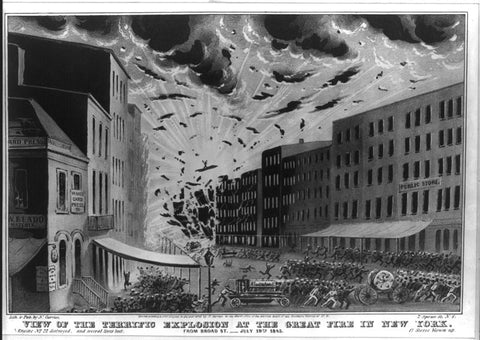
Here is an excerpt from a witness account of the blaze.
". . .an immense body of flame... it instantly penetrated at least seven buildings, blew in the fronts of the opposite houses on Broad Street, wrenched shutters and doors from buildings at some distance from the immediate scene of the explosion, propelled bricks and other missiles through the air, threw down many individuals who had gone as far as Beaver Street, spread the fire far and wide, so that the whole neighborhood was at once in a blaze, and most unfortunately covered up the [fire company's] hose.... After this the firemen could with difficulty obtain any control over the conflagration."
Inspiration
When we contacted Ryan Brown from the Pursuit of NY, we gave him very simple instructions. We wanted him to create a design that was historically significant to New York's history. We wanted it to be a fresh, new look for a t-shirt. The rest was up to him. We knew the problem wouldn't be coming up with an idea, more honing in on one great idea. The Last Great Fire tee is the result of all his research. The whale represents the whale oil store that was responsible for the blaze. The whale is also drawn into a rough shape of Manhattan and the blaze escaping from his mouth is roughly where the fire started. Located on the top and bottom of the whale are map icons for the East and North River with an anchor showing north and south and the date of the fire.

The Last Great Fire of New York City encompasses everything we look for when we make a shirt--a design that stands alone on its own merit and becomes more interesting once you learn the story behind the design. Ryan Brown is one of the great talents we've come across since starting H&I and if you're looking for cutting edge designs from one of the hippest indie labels out there, you should check him out at Pursuit of NY.
Historical Novel
While researching The Last Great Fire, I came across a mystery novel that takes place in 1845 New York and includes the The Last Great Fire in the novel. The Gods of Gotham written by Lyndsay Faye was one of Publishers Weeklys top ten Mystery/Thriller novels of the year. Lyndsay spent over a year researching the book before writing it and by all accounts is very historically accurate. Beyond that, I would recommend it as a very easy read.
The Last Great Fire of New York City changed the building codes in New York City and eventually played a part in unifying the fire service into what would become FDNY as we know it today. We're proud to release this shirt and recognize that from the ashes we rise and continue the mission of making the fire service better than it was before we found it.
Firewire 8/22-8/29 August 22 2013, 0 Comments
A mostly fire related, semi-occasional, mining of web type stuff.
This week we released 'The Bronx is Burning' tee and so far it seems as if you guys like the shirt as much as we do. If you're interested in learning more about The War Years in the Bronx, here are all four parts of the BBC documentary Man on Fire. Each part is about 12 minutes long and give a true perspective of the time period.
Doing all the research for 'The Bronx is Burning' tee, I've found so many great videos and pictures from the time period. Here are a few more that didn't make the cut from the original blog.

George Steinbrenner, left, gives manager Billy Martin a bearhug and congratulations after the Yankees defeated the Kansas City Royals to take the 1977 AL championship
And the last New York thing I found (I promise) is a very cool before and after comparison to places in NYC.
This is a very interesting photo essay. You can see more by clicking here.
Collab with Ryan Brown from Pursuit of NY
Our new Bronx is Burning tee was designed by Pursuit of NY. They are, about the coolest indie label I've seen in a while. Check em out.
Cool Stuff, you'll Probably Never Need
A homemade adjustable wrench for all you doomsday preppers who are always preparing.
Parting Thought That Pertains To My Frame of Mind During Most EMS Calls
Enjoy your Thursday.
